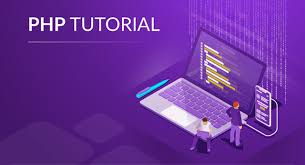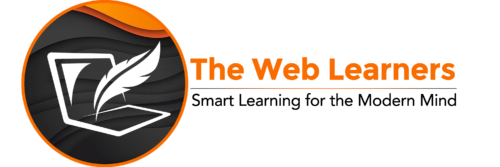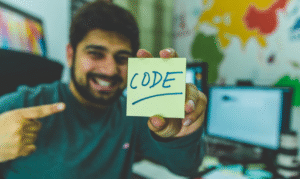
PHP Tutorial
Want to know about PHP tutorials? Wondering if this is the right time to pitch in as a beginner? Or are you already a seasoned developer revisiting the basics? No matter where you stand in your coding journey, now is the perfect time to learn PHP, one of the most widely used server-side scripting languages. Let’s get ready to start your journey today and explore A to Z PHP tutorials with us.
A Brief History of PHP
PHP, originally created by Rasmus Lerdorf in 1994, started as a small open-source project. The abbreviation PHP initially stood for Personal Home Page. However, as it evolved, PHP was later renamed to a recursive acronym: PHP: Hypertext Preprocessor.
It began as a simple set of Common Gateway Interface (CGI) binaries written in C, intended to track visits to Rasmus’s online resume. Over the years, PHP has transformed into a robust and flexible language capable of powering millions of websites worldwide, including large content management systems like WordPress, Joomla, and Drupal.
Read also: PHP Installation Guide: From Beginner to Expert
PHP Versions
As of now, PHP has gone through several major upgrades and enhancements. Currently, PHP 8.2.8 is the latest stable version, released on July 4th, 2023. It introduces new features and performance improvements such as:
-
Readonly classes
-
Disjunctive normal form types
-
Improved performance
-
Better type safety
If you are just getting started, it’s absolutely okay to learn PHP from its basics and move gradually to the more advanced features of the latest versions.
PHP Tutorials: Features of PHP
PHP is not only powerful but also flexible and developer-friendly. Here’s a breakdown of some essential features of PHP you’ll explore in these tutorials:
-
File Handling
PHP can create, open, read, write, and close files on the server. This makes it possible to store logs, create downloadable content, or manage data files. -
Data Collection
It can gather, save, and return user input through HTML forms. This is especially useful in user registration, login systems, and surveys. -
User Access Control
PHP can restrict users from accessing unauthorised pages or sections of your website, making it essential for membership-based sites or admin dashboards. -
Cookie Management
PHP can access, set, and modify cookies, allowing you to track user activity and preferences across sessions. -
Data Encryption
It supports built-in functions to encrypt and hash sensitive data like passwords for secure transmission and storage.
PHP File
A PHP file can contain a combination of PHP, HTML, CSS, and JavaScript code. When the server executes the PHP code, the result is returned as plain HTML to the browser.
-
File Extension:
.php -
Execution Environment: Server-side
-
Output: Dynamic HTML content
Example:
php
<?php
echo “Welcome to PHP Tutorials!”;
?>
When the browser loads this, it only sees:
“Welcome to PHP Tutorials!”
Why Do You Use PHP?
Why Should You Use PHP in 2025?
There are many server-side languages like Python, Node.js, and Ruby. So, why should you still consider PHP in 2025?
-
Easy to Learn
PHP has a simple syntax that resembles C, Java, and Perl, making it beginner-friendly. -
Open Source and Free
You can download and use PHP for free without worrying about licenses or subscriptions.- Free PHP Installation is possible!
-
Platform Independent
It runs on almost all major operating systems, including Windows, Linux, and macOS. -
Database Integration
PHP supports a wide range of databases such as MySQL, PostgreSQL, SQLite, and even NoSQL databases like MongoDB. -
Strong Community Support
PHP has a large, active community of developers who contribute to forums, GitHub repositories, and Stack Overflow. -
Excellent Frameworks Available
Modern PHP development can be supercharged using frameworks like Laravel, Symfony, CodeIgniter, and Yii. These reduce development time and improve code organisation.
How Can You Start Learning PHP?
To get started with PHP, here’s a simple roadmap you can follow:
-
Install a Local Server
Use XAMPP, WAMP, or MAMP to run a local PHP server on your machine. -
Basic Syntax & Data Types
Learn about variables, constants, data types, and operators. -
Control Structures
Understand if-else conditions, loops (for, while), and switch cases. -
Functions & Arrays
Learn how to create reusable code with functions and store data with arrays. -
Form Handling
Learn how to collect and validate user input using HTML forms and PHP. -
Database Connection
Understand how to use PHP to connect with MySQL and perform CRUD operations. -
Project Building
Start with mini-projects like login forms, contact pages, or even a to-do app.
To understand it better, watch this video:
Start Your PHP Journey Now
Learning PHP in 2025 is still a wise choice — especially if you want to build dynamic websites, work on WordPress development, or get into backend engineering. With its simple syntax, active community, and versatility, PHP continues to be a beginner-friendly and powerful language to master.
FAQs
Q1: Is PHP still relevant in 2025?
Yes, PHP remains widely used due to its ease of use, strong ecosystem, and extensive community support. Major websites and platforms still rely on PHP.
Q2: What are the best resources to learn PHP for free?
You can start with W3Schools, PHP.net (official documentation), or even YouTube tutorials. Also, follow blogs like ours for simplified tutorials.
Q3: Can PHP be used for modern web development?
Absolutely! PHP, especially with frameworks like Laravel or Symfony, supports MVC architecture, RESTful APIs, and robust web applications.
Q4: Is PHP better than Python for web development?
Each has its strengths. PHP is excellent for server-side web development and has long-standing CMSs like WordPress. Python, on the other hand, is more versatile across domains like AI and data science.
Q5: How long does it take to learn PHP?
If you dedicate consistent time, you can learn the basics of PHP in 1–2 weeks. Becoming proficient may take 1–3 months depending on your pace.






